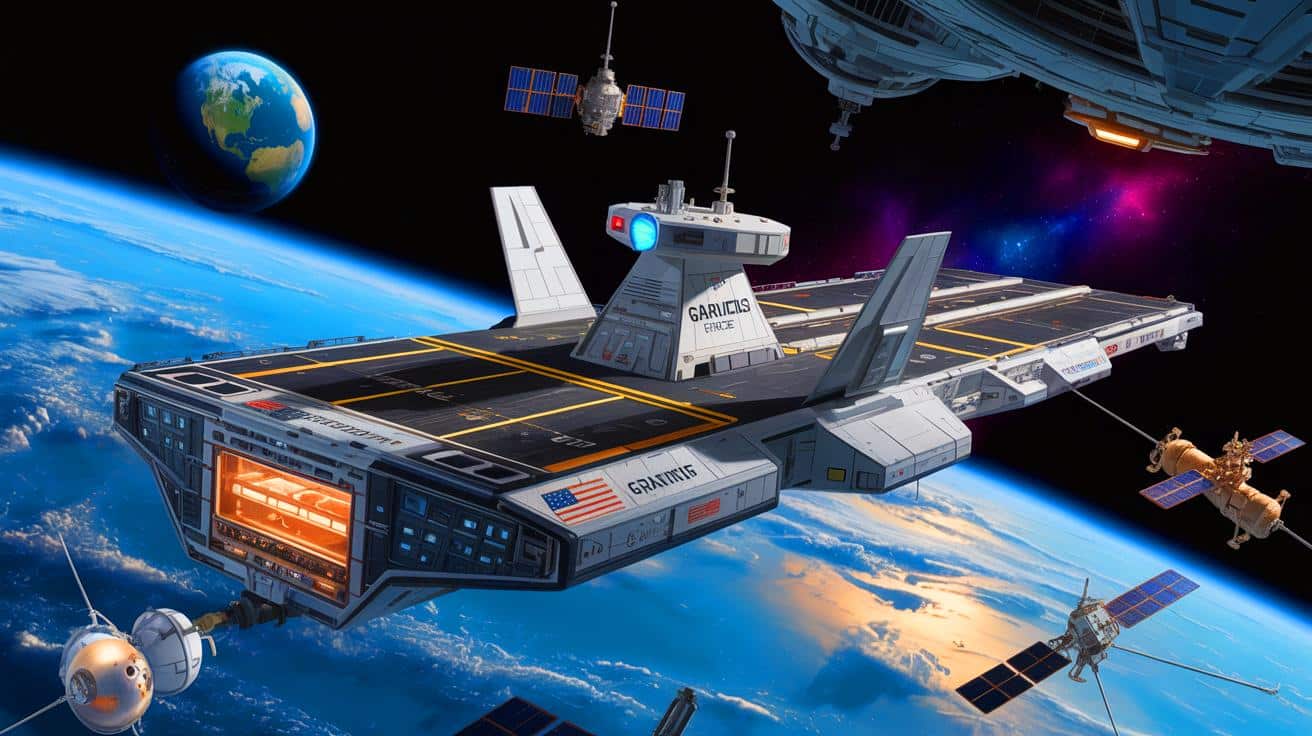IN A NUTSHELL
🚀 The U.S. is advancing its space capabilities with an orbital aircraft carrier project.
🔒 The carrier provides an unpressurized environment to protect sensitive electronics in space.
🤝 Public-private partnerships play a crucial role in enhancing U.S. space superiority.
🌌 This initiative marks a new era in space exploration and international relations.
The United States is embarking on an ambitious project to redefine satellite deployment through the development of an orbital aircraft carrier. This initiative, led by the innovative startup Gravitics in collaboration with the U.S. Space Force, marks a significant step in the country’s strategic focus on space as a critical domain. The endeavor underscores an increasing trend of collaboration between private companies and national defense agencies, emphasizing the U.S.’s commitment to maintaining its dominance in the space arena. As global geopolitical tensions continue to rise, the United States is making a decisive move to secure its presence and ensure its leadership in space technology.
The Vision Behind the Orbital Aircraft Carrier
Gravitics, in partnership with the U.S. Space Force, is spearheading a groundbreaking $60 million project to create an orbital aircraft carrier. This innovative platform is poised to transform the way satellites are launched and deployed. By enabling the direct launch of satellites from Earth’s orbit, the initiative promises a faster and more agile response to national security threats. This approach eliminates the traditional dependence on rocket launches, providing a substantial strategic advantage for military operations.
The orbital carrier is designed to align with the U.S. military’s interest in maintaining a robust presence in space, particularly as the threat of a space arms race looms. By having a pre-positioned platform in orbit, the United States can deploy satellites quickly and efficiently, addressing both immediate and future security concerns. This advancement in space technology underscores the nation’s commitment to maintaining leadership in this critical area, ensuring it remains at the forefront of global space capabilities.
Enhancing Space Security and Superiority
The orbital aircraft carrier developed by Gravitics is engineered to house multiple satellites in an unpressurized environment. This design ensures the protection of sensitive electronics and batteries from the harsh conditions of space. In an era dominated by electronic warfare and cyber threats, safeguarding these components is crucial. By isolating and shielding satellites, the United States gains a strategic edge in enhancing its space security capabilities.
Moreover, the carrier’s ability to conceal satellites from adversaries provides a tactical advantage. According to Gravitics CEO Colin Doughan, the carrier is a “game-changer” that aligns perfectly with the Space Force’s mission of achieving orbital dominance. This project not only strengthens military capabilities but also sets a precedent for future technological advancements in space exploration.
Public-Private Partnerships and Their Impact
The development of the orbital aircraft carrier highlights the growing importance of public-private partnerships in the space sector. Gravitics, along with Axiom Space, is also working on a pressurized space module. This demonstrates the company’s commitment to both national defense and commercial solutions. Such dual approaches highlight Gravitics’s alignment with the Department of Defense’s objectives and its growth trajectory.
Collaborations between private companies and government entities are crucial for integrating innovative technologies into national defense strategies. By working together, these partnerships bolster the United States’ position in space while fostering the development of technologies with potential civilian applications. The success of these collaborations could open new market opportunities and drive further advancements in space technology.
The Future of Space Exploration
With the emergence of technologies like the orbital aircraft carrier, a new era of space exploration and utilization is on the horizon. This technological leap has the potential to transform security, surveillance, and communication paradigms. It impacts not only military operations but also the involvement of the private sector. The implications are vast, signaling a shift in how space is utilized and governed.
As the U.S. Space Force and companies like Gravitics prepare to meet future challenges, questions about international space cooperation arise. How will these innovations influence diplomatic relations between nations? More importantly, how can we ensure that space remains a domain of shared peace and progress, benefiting all of humanity?
As the United States forges ahead with this pioneering project, it stands at the threshold of a new chapter in space exploration. The successful development and deployment of the orbital aircraft carrier could redefine security and technological landscapes. However, as nations advance their capabilities, the challenge remains to ensure that space exploration fosters cooperation rather than conflict. The crucial question remains: how will the international community navigate the complexities of space as a shared resource and arena for human endeavor?
This article is based on verified sources and supported by editorial technologies.
Did you like it? 4.5/5 (25)

